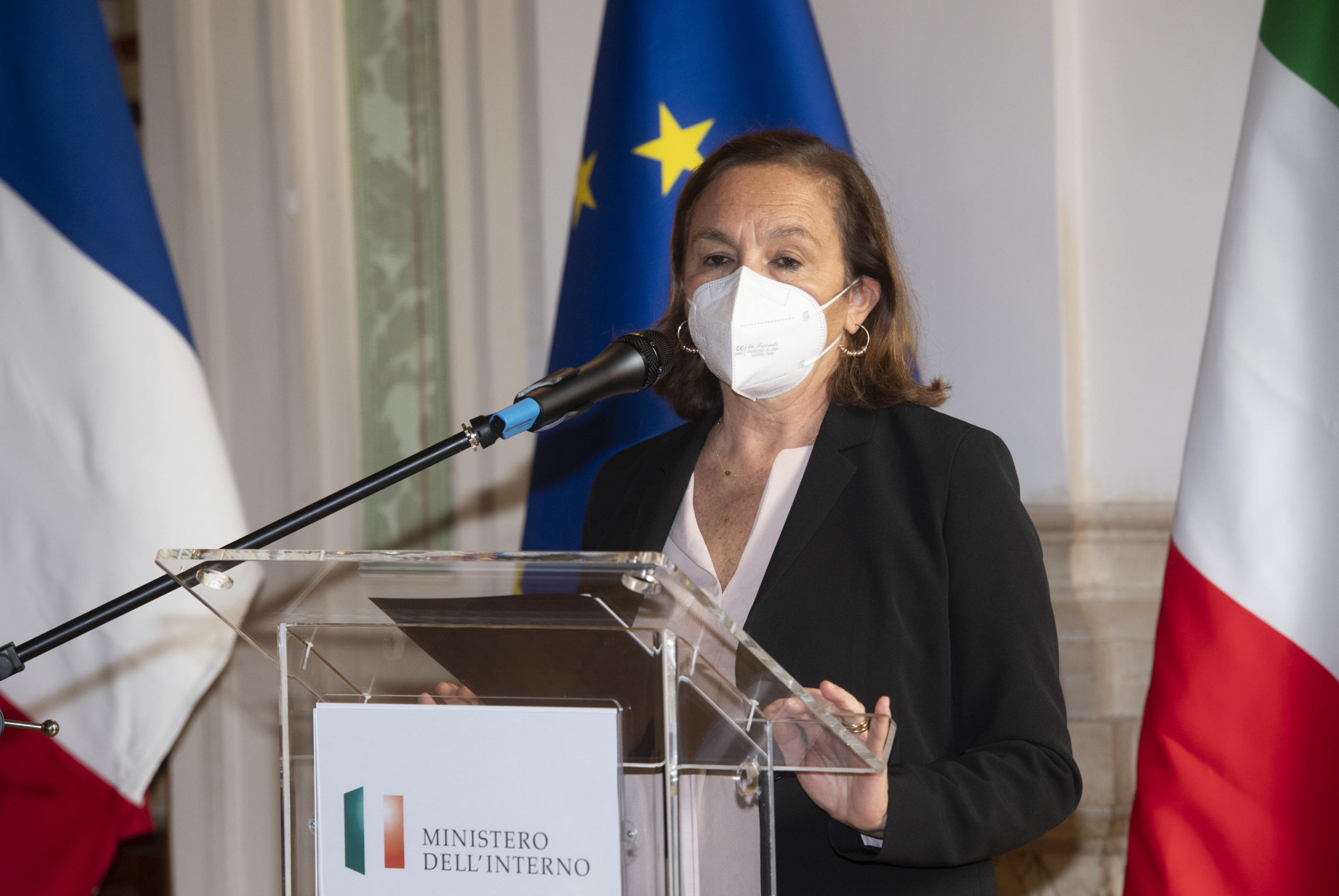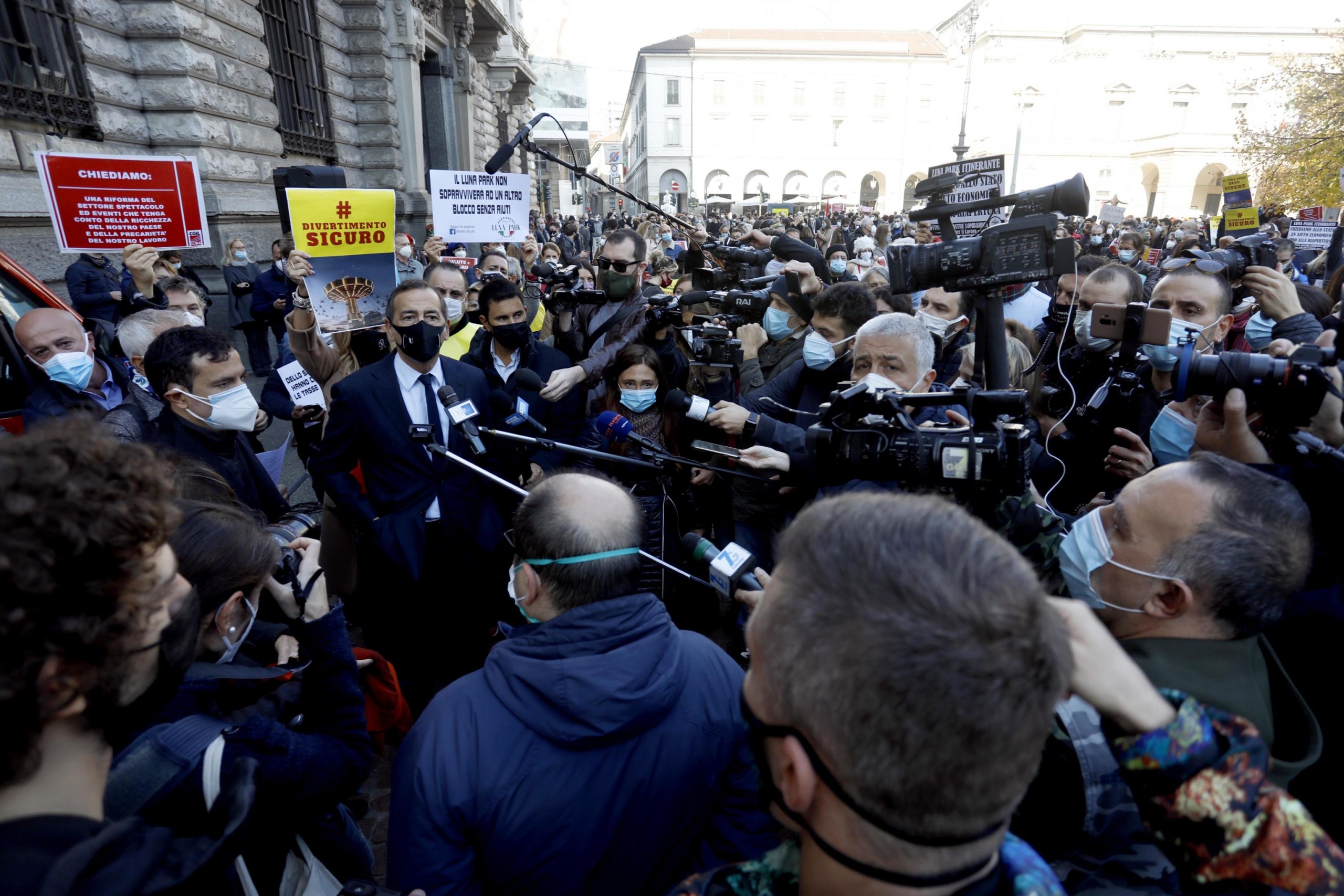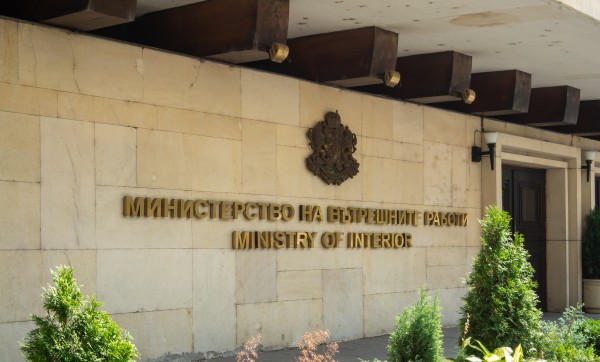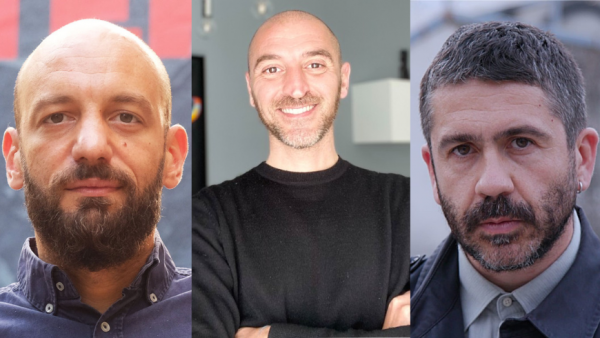On the evening of 24 October, Italian journalist Raffaella Cosentino was sent to Palermo to cover a protest against the government’s COVID-19 measures organized by bar and restaurant owners. After the announcement of a new curfew in Italy at the end of October, many in the hospitality industry reacted with anger and took to the streets.
Cosentino, a journalist working for the Italian public broadcaster Rai, joined the gathering along with a cameraman to report on the event. As the demonstrators marched towards the seat of the president of the region of Sicily, the group of protestors mixed with “neo-fascist” groups who tried to stir up the protests.
From that point on the tone of the demonstration changed. As Cosentino and her colleague tried to continue interviewing protesters and taking footage, a leader of the far-right groups declared over a megaphone that the media were “terrorists” working for the government. Cosentino and her colleague were later confronted by a group of men who insulted them and accused them of being traitors as they work for Rai.
“It suddenly became a threatening atmosphere”, Cosentino told IPI. Though some police officers had been standing nearby, they did nothing to protect them, she said. After the men threatened to destroy the crew’s camera, Cosentino and her colleague left, fearing for their safety.
Days later, a different team from Rai was the target of intimidation at another similar protest in Palermo. According to Cosentino, these kinds of cases are interconnected and are occurring in a charged political climate in which journalists are increasingly labelled as enemies.
“It is clear that if you have politicians who empower this menace of journalists in public, it can’t be a good message”, she said. “This enhances the attitude to not consider journalists as the watchdog of democracy but as someone that can be targeted”.
The ongoing pandemic, adding both financial and personal issues, increases these tensions, creating a more precarious situation for journalists. “When the tension is high, you are more on the frontline and face a greater risk”, Cosentino said.
Threats and attacks on journalists on the rise
These cases of violence against journalists in Italy are far from isolated incidents. During the pandemic, journalists have been attacked and harassed during anti-lockdown and anti-mask protests in cities including Naples, Florence and Rome. Over a period of three weeks in October and November, the Media Freedom Rapid Response (MFRR) documented at least nine incidents involving 14 members of the Italian media in six different cities, including one photojournalist being hospitalised with a head trauma.
This trend was confirmed by a recent report by the “Coordination Centre on the Phenomenon of Intimidating Acts Against Journalists” – a body set up in 2017 which conducts monitoring, analysis and prevention work to improve the journalists’ safety. Chaired by the minister of the interior, it is composed of the head of cabinet, the chief of police, the president and secretary general of the Italian Press Federation (FNSI) and the president and secretary general of the Order of Journalists.
In 2020, the Coordination Centre’s report found that police forces recorded 163 verified incidents of intimidation against journalists, an increase of 87 percent compared to the previous year. These ranged from physical aggression and verbal threats to threatening letters or online harassment.
While organized crime was still responsible for a significant number of threats (around 17 per cent in 2020), during the last year of COVID-19 and lengthy lockdowns, political issues became the main motivation for acts of violence against journalists. Nearly half (44 percent) of the incidents of intimidation occurred through online platforms, with the lockdown accentuating and exacerbating this trend, the report said, with 19 percent of all threats made against women journalists and 76 percent against men.
As in previous years, in 2020 southwestern cities and regions of Lazio, Sicily, Campania, Calabria and Lombardy recorded the highest number of incidents. However, unlike in other EU countries, in Italy not a single incident of intimidation against journalists by members of the police was reported over the last year, according to the report, with all cases coming from members of the public.
This increase in Italy mirrors a trend observed during the pandemic elsewhere in Europe: that a mix of polarisation, right-right politics, low trust in mainstream news sources and conspiracy theories about the role of the media have contributed to growing anti-press sentiment, leading to threats against journalists both online and on the streets.
In Italy, a country which has long suffered from attacks and threats against media workers, this high-level monitoring mechanism was well placed to closely measure the impact of COVID-19 on journalists’ safety. Under the new minister of the interior, Luciana Lamorgese, the body has seen a revival and has proven to be more efficient in collecting and responding to threats than under previous administration, providing a model for other EU governments.

Italian Interior Minister, Luciana Lamorgese. Rome, Italy, 6 November 2020. EPA-EFE/CLAUDIO PERI
Safety of journalists back on the agenda
Raffaele Lorusso, general secretary of the Federazione Nazionale Stampa Italiana (FNSI), an Italian journalist union which is part of the Coordination Centre, told IPI that since coming into office the new Italian government had shown greater attention to the safety of journalists. Lorusso praised the recent work of the Coordination Centre, saying it “allows for a clear and updated picture of the situation of threats against journalists, to intervene promptly on the most worrying cases, to solicit the police on the issue of the defence of journalists”.
In addition, he said, the Parliamentary Anti-Mafia Commission has set up a special committee dedicated to the protection of journalists under threat. “Intimidations against journalists are a terrible and increasing phenomenon”, he said. “At the moment, 22 Italian journalists are receiving police protection because of threats received by the mafia and extreme right groups.”
In recent months, FNSI has also registered several cases in which journalists were attacked after asking questions about compliance with anti-COVID measures. Often, the answers were “broken cameras, insults and threats”, Lorusso said. According to Lorusso, a special law to combat intimidation against journalists would be an important tool for protecting journalists. “We know the most important thing is to continue to fight along with colleagues”, he said, “And we know that in Italy we have a long way to go”.
Lawsuits and SLAPPs
Despite this worrying increase in verbal or physical attacks, they make up only one of many pressures on press freedom in Italy, such as the lack of financial security, a low level of media pluralism or Strategic Lawsuits Against Public Participation (SLAPP) aimed at intimidating journalists and financially pressuring newsrooms.
“During my career I have been served with 300 lawsuits so far”, Italian journalist and television host Milena Gabanelli told IPI. These were filed for intimidation purposes and to discourage her from publishing stories. It is an often-used strategy in Italy, Gabanelli said, to pressure owners of newspapers with legal threats in order to suppress critical reporting about their businesses. Fortunately, all of these cases were ruled in Gabanelli’s favour.
“There are simply taboo subjects, such as all topics that could involve the newspaper’s advertisers (large food and energy companies, luxury brands), to avoid the risk that they stop advertising on the newspaper and, by consequence, jeopardize the survival of the newspaper itself”, Gabanelli explained. At the same time, journalists who report on organized crime are frequent targets of intimidation. “This is certainly an obstacle to my work, and it forces me to carefully choose the topic to cover”, she said.
According to Gabanelli, Italian journalism is highly politicized and many tend to trust only journalists “who tell them what they want to hear”. “There is mistrust, also because the harshest and most documented reports – even those involving politicians – are rarely followed-up”, she added. “It all ends-up in controversy, and then everything is quickly forgotten”.
For Gabanelli, the two main constraints on press freedom in Italy are extortion related to press advertising and the systematic filing of lawsuits for intimidation purposes. “I have been asking for years that severe sanctions are imposed on those who file intimidation lawsuits – like they do in the U.S. – but so far without success”, Gabanelli said.
Coordination centre becoming an “important reference point”
“At the moment, the Italian government is still involved in the COVID-19 emergency that is a priority with the economic situation of Italy”, Antonella Napoli, a board member of free-speech watchdog Articolo 21, said. “It seems that there is attention to the issues of press freedom and insecurity in journalism, but it is too early to understand if there is a real change of action.”
Since its creation, the Coordination Centre has been an “important reference point” for journalists, Napoli said. Together with the Italian Press Association, it collects testimonies from threatened journalists and offers them protection. Nonetheless, journalists face the constant threat of legal action, especially SLAPP suits, which in Italy can reach “grotesque proportions of intimidation”, Napoli said.
“You feel gagged and tied, especially if you are a freelance journalist,” she said. “If you get your hands on big news about a public figure with the tendency to sue, you’ll think twice. I have never stopped, but many give up because they fear consequences that they can’t afford.”
Some have been suspicious of the establishment of the Coordination Centre, aware of the many failed attempts over the last 20 years, Napoli told IPI. “The situation feels like another uphill battle sending ripples of a familiar sense of tiredness” she said. “I don’t believe in reform anymore. If politicians are the top perpetrators, why would anyone commit to something that could backfire against them?”
To what extent the current government is going to prioritize press freedom at a time of various economic and social crises remains to be seen. However, the government’s questionable role in this should not be overlooked. Recent reports revealing that Italian prosecutors wiretapped several journalists covering the migration crisis in the central Mediterranean make this even more evident.
This article by IPI is part of the Media Freedom Rapid Response (MFRR), a Europe-wide mechanism which tracks, monitors and responds to violations of press and media freedom in EU Member States and Candidate Countries.




